Think back to the last thing you Googled. Did the content you discover actually answer the question you were asking? Did you feel engaged in reading the article or watching the video that you found? Were you able to find a helpful next step to learn more?
If you answered "yes" to any of these questions, then the person who created the content probably paid close attention to its structure. And they're reaping the benefits -- you, along with many others, are now aware of their business and potentially interested in engaging with future content related to their brand.
Ultimately, all effective digital content has a blueprint. You may not notice it, but it's intended to help you and other readers make well-informed, confident decisions -- whatever those decisions may be.
I've been a content marketer for over a decade. During that time, I've worked with thousands of businesses to help them effectively tell their brand's story while increasing visibility online. Through this process, I've learned a thing or two about what works, what doesn't, and why.
If you're looking to improve your content marketing skills, it's helpful to know what goes into creating content that both humans and search engines love. We'll run through several of my favorite examples of content marketing that I've seen in 2019, below. Additionally, I'll explain why each tactic was successful.
1. Switchback Travel's Image Featured Snippet
First, a reminder -- featured snippets are Google's attempt to answer a search query on the results page itself. Google features these snippets in a box just before the number one organic search listing. They're important because they take a significant portion of the search traffic from the results below them.
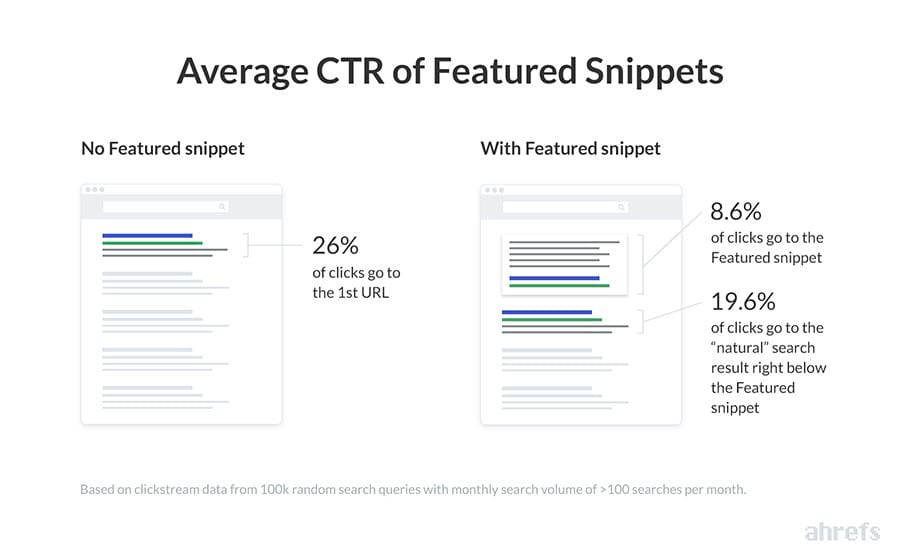
Featured snippets can show up in a variety of formats. However, below are the most common featured snippets Google generates:
- Paragraph featured snippet
- Image featured snippet
- YouTube featured snippet
- List featured snippet (bulleted and numbered)
One good content marketing strategy is to try and optimize your images for Google's featured snippet. For instance, take a look at Switchback Travel's image, displayed below as the image result for the search term "best hiking boots":

As shown in the above example, Google sometimes pulls from more than one site to answer a person's question. Occasionally, a source might claim both the text and image featured snippet, but that's not always the case. In the above example, the text is from New York Magazine but the image is from Switchback Travel.
Ultimately, you might consider optimizing your images for search to try and capture the featured snippet result for keywords related to your product or service, like Switchback Travel did.
2. Toyota Europe's YouTube Featured Snippet
Google looks at more than just website content when it comes to featured snippets. Google additionally pulls content from YouTube, which is why it's important to optimize your video content accordingly. Google may choose to recommend a specific clip from the YouTube video, as well.
For instance, check out Toyota Europe's YouTube featured snippet, which offers a suggested clip:
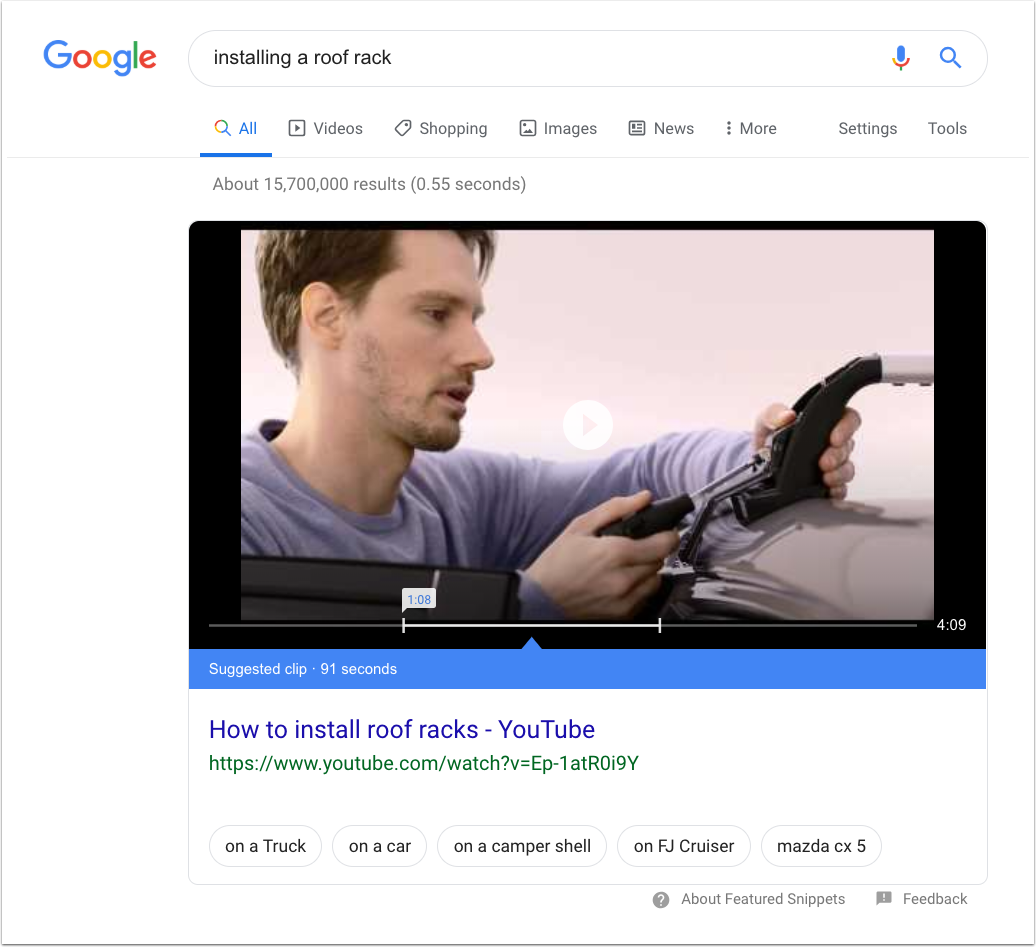
By correctly optimizing your YouTube videos for SEO, you have a chance of being featured on search engines, rather than just YouTube. This enables you to reach a larger audience.
3. Washington Post's List-based Article
List-based articles are powerful opportunities to win Google's featured snippet box for an intended search.
For instance, if you're unsure of how to plan for a road trip, you'll likely stumble across this Washington Post listicle when searching "how to plan for a road trip" on Google or another search engine:
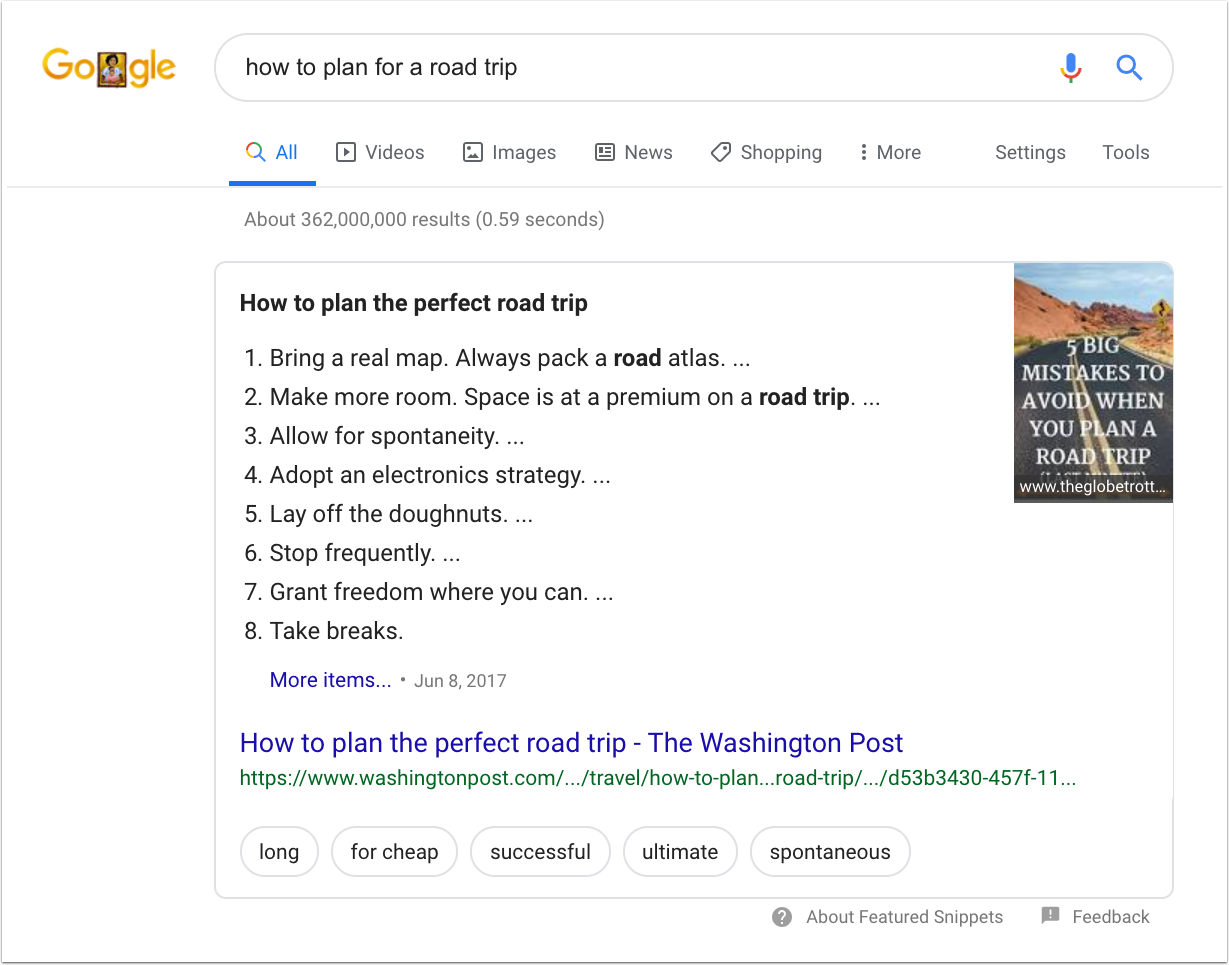
4. RVing Planet's Bulleted Featured Snippet
Additionally, the bulleted list featured snippet is often used for list-based articles, as well. This could be in the form of ranked or unranked items as well as a best-of list.
For example, let's say you're looking for a home on wheels to travel in -- this RVing planet blog post could bring value to your search:
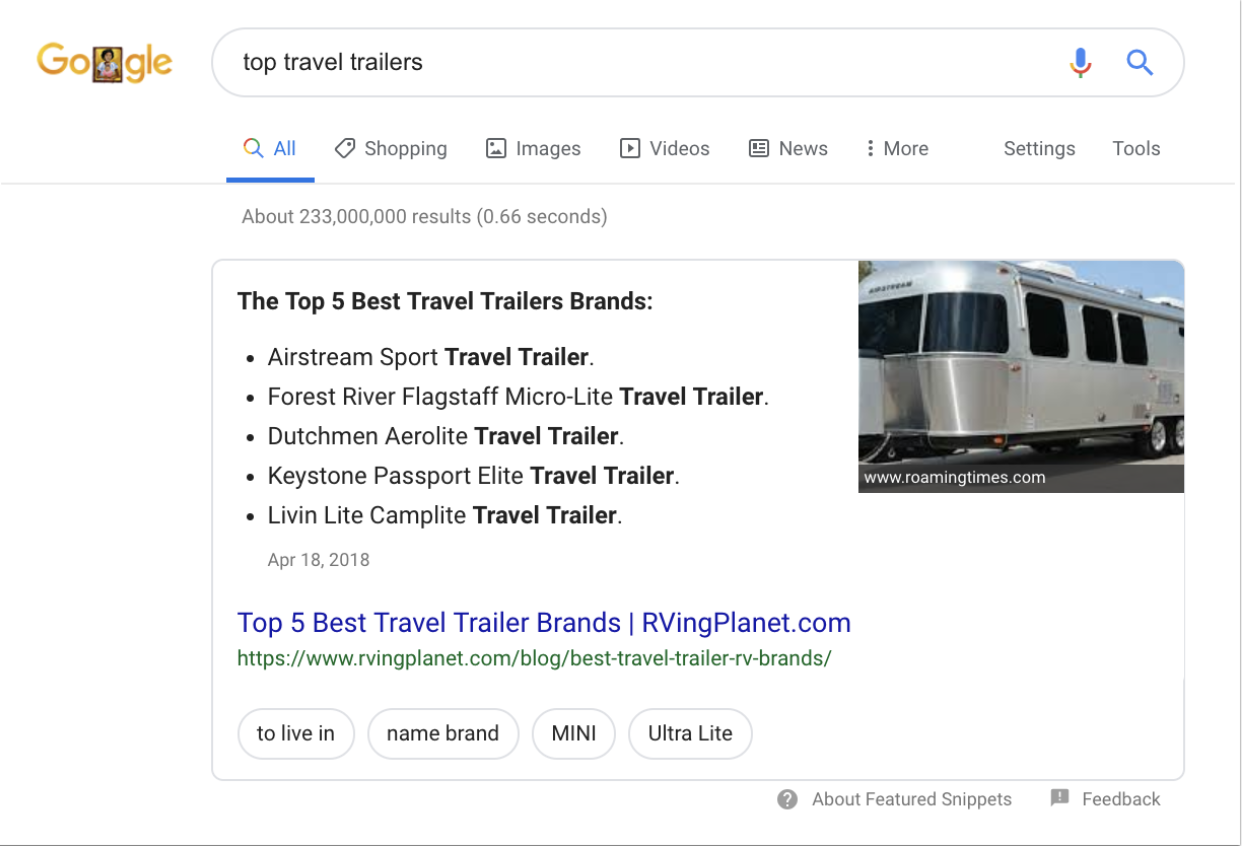 There are several ways to optimize your content in a human and helpful way that can lead to Google pulling your content into its featured snippet box.
There are several ways to optimize your content in a human and helpful way that can lead to Google pulling your content into its featured snippet box.
Here are some quick pro tips for optimizing for Google's featured snippet box:
- Include a YouTube video near the top of your page and optimize it according to how the page is optimized.
- Similar to your video content, make sure to optimize the alt-text of your images throughout the page.
- Near the top of the page, state what this page is about. This could be a definition or clear introduction to what this person is going to learn.
To learn more about featured snippets, check out the video below.
5. Content Marketing Institute's Click to Tweet
If you make it easy for people to share something interesting with their network, then they're much more likely to do so. An effective way to encourage readers to share your content with their social network is to embed a "click to tweet" button that automatically shares an interesting quote or statistic from your article.
For example, this blog post that I wrote for Content Marketing Institute is the most widely shared guest blog post I've ever written:
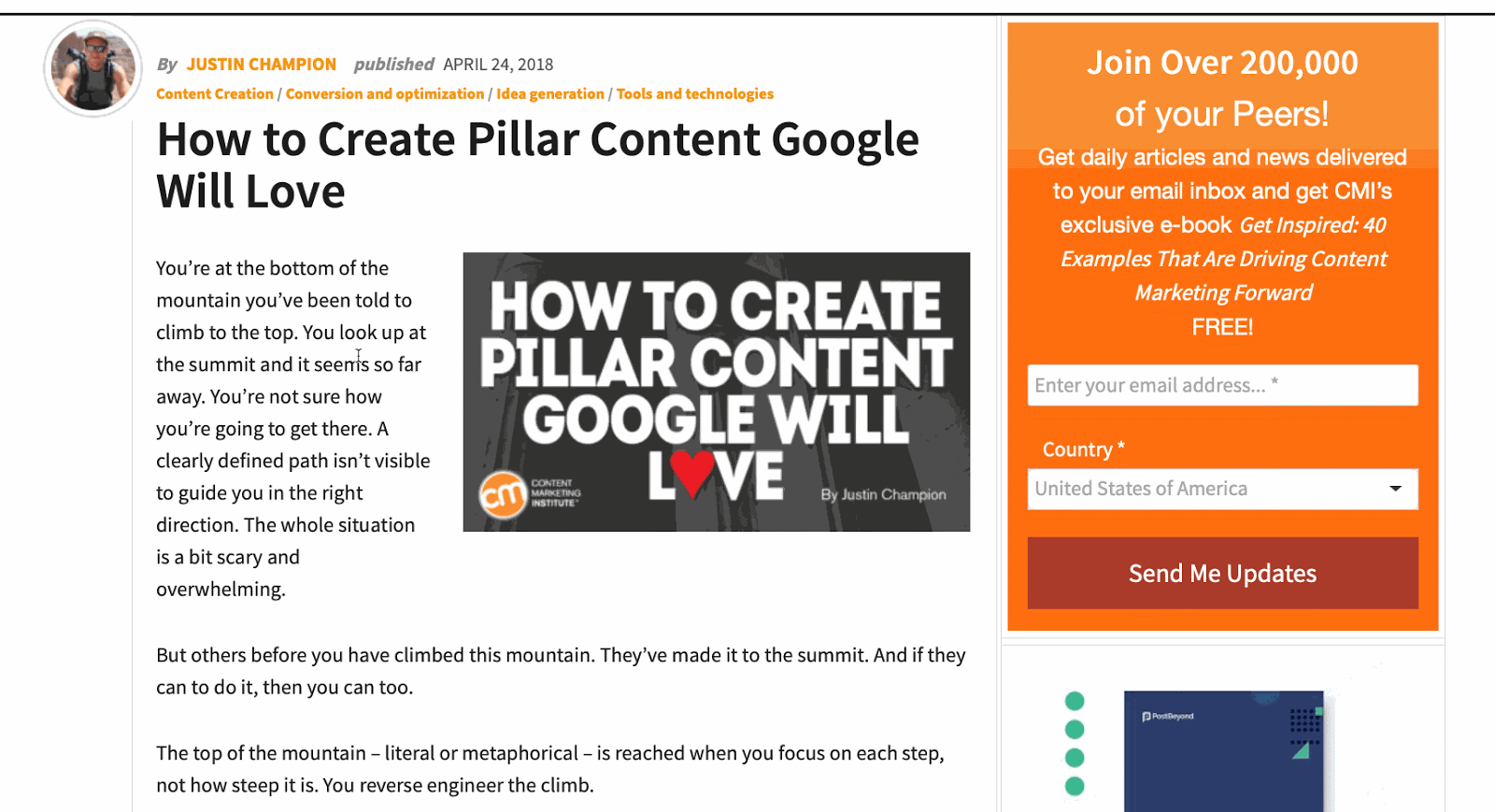
Months after publication, I still get daily Twitter notifications from people tweeting about this article. And the majority of the tweets come from the "click to tweet" option that Content Marketing Institute offers throughout the post.
If you want to start adding "click to tweet" options throughout your website content, check out this free tool.
6. Digital Olympus's Expert Roundup
No matter what industry you're in, there are influencers to whom people look for advice.
Partnering with these folks will strengthen your content, and more importantly, they'll be more likely to promote the content if they're mentioned in it.
Digital Olympus interviewed over 40 digital marketing experts for one of their blog posts, asking each expert to provide their most effective method for acquiring traffic.
What I most like about this blog post is how Digital Olympus organizes the contributions. At the top of the page, there's a headshot of each expert next to their name. If you want to read a particular expert's tip, you simply have to click on their headshot and you'll jump down to their quote.
There's also an anchor-linked Table of Contents that allows for topic-based searches. This way, readers can jump to the specific sections that are most applicable to them.
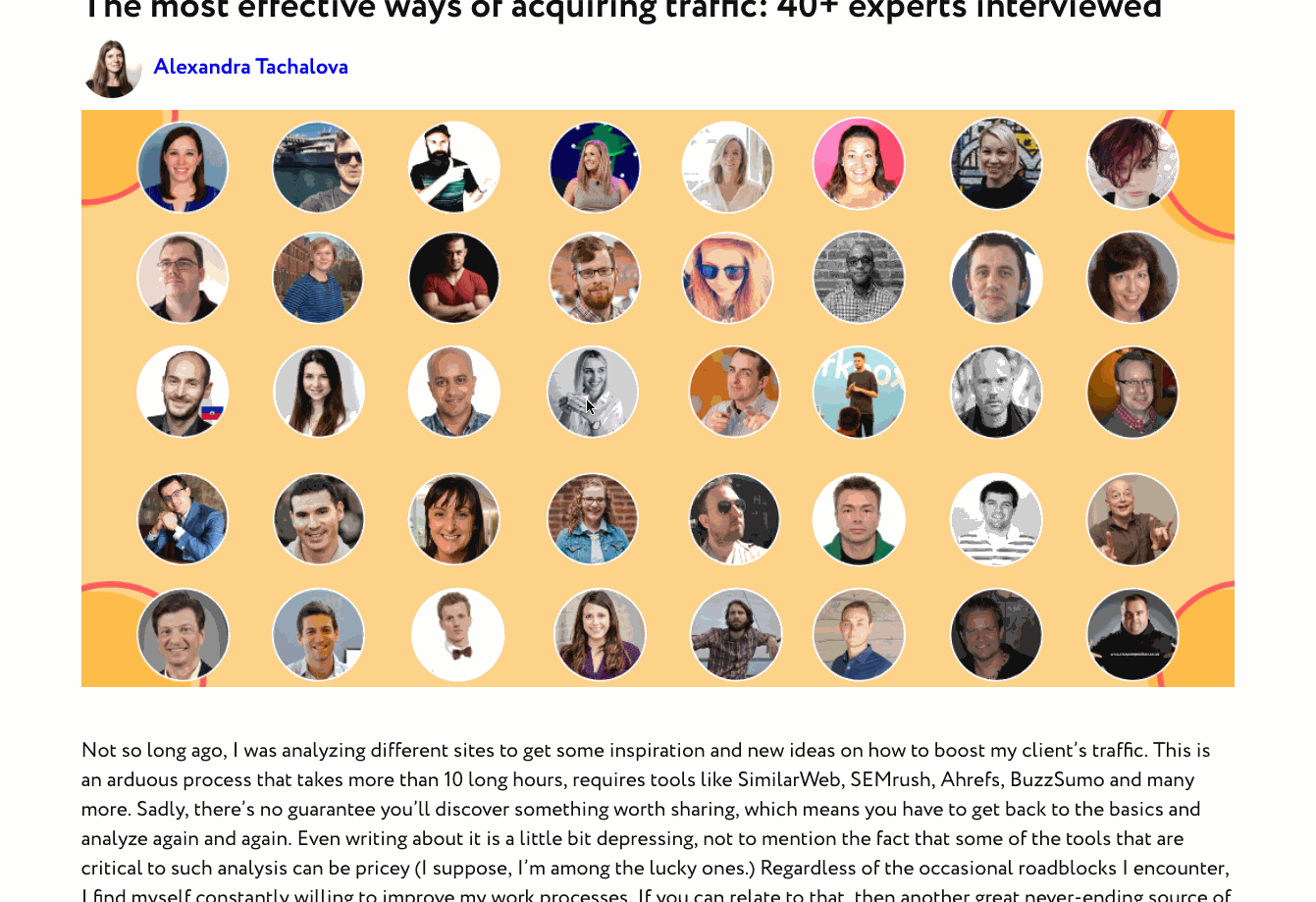
7. Colgate's Research Page
Creating a resource page made up of helpful links on a given topic is an effective way to create helpful content.
If your business has been producing content for a while, then chances are you have clusters of related content to support the topics around which your business wants to build authority.
For example, oral hygiene company Colgate has over 2,400 pieces of content related to their broad topic "gum disease":
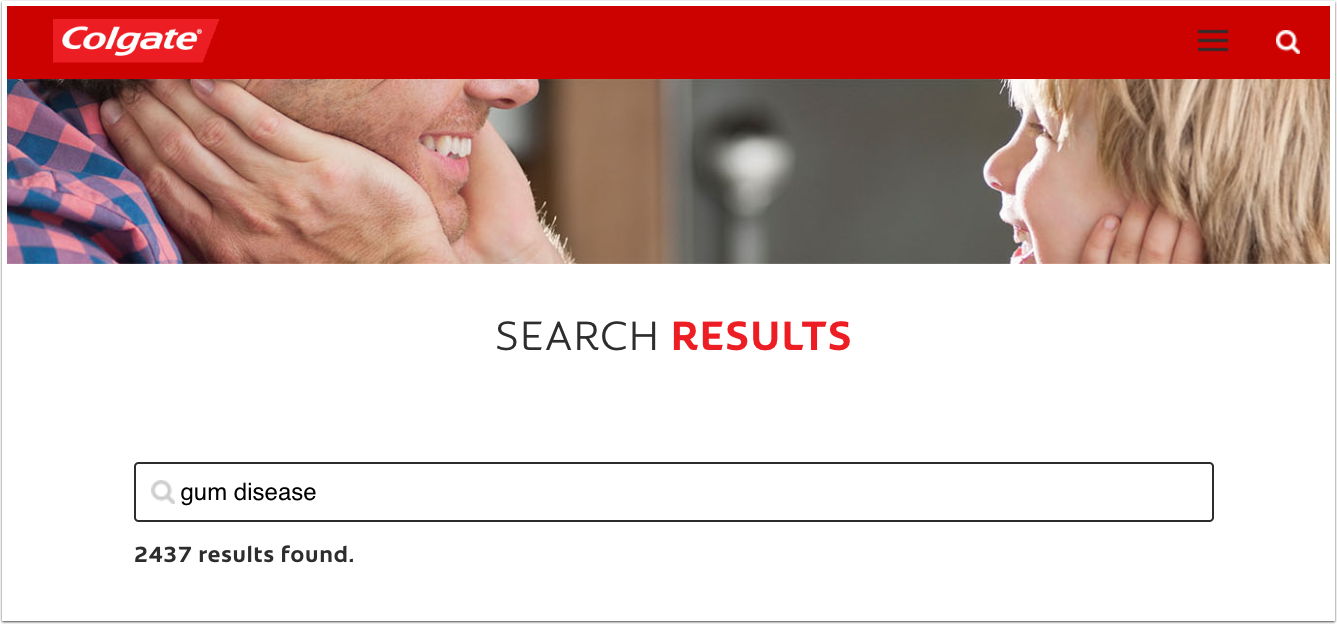
That's a lot of content to sift through … which is why Colgate created a resource page made up of specific sections of gum disease-related content, like "gum disease cause" or "gum disease diagnosis".
Each section offers:
- A paragraph of explainer text
- A bulleted list of details on the sub-topic
- Links to relevant content on their site
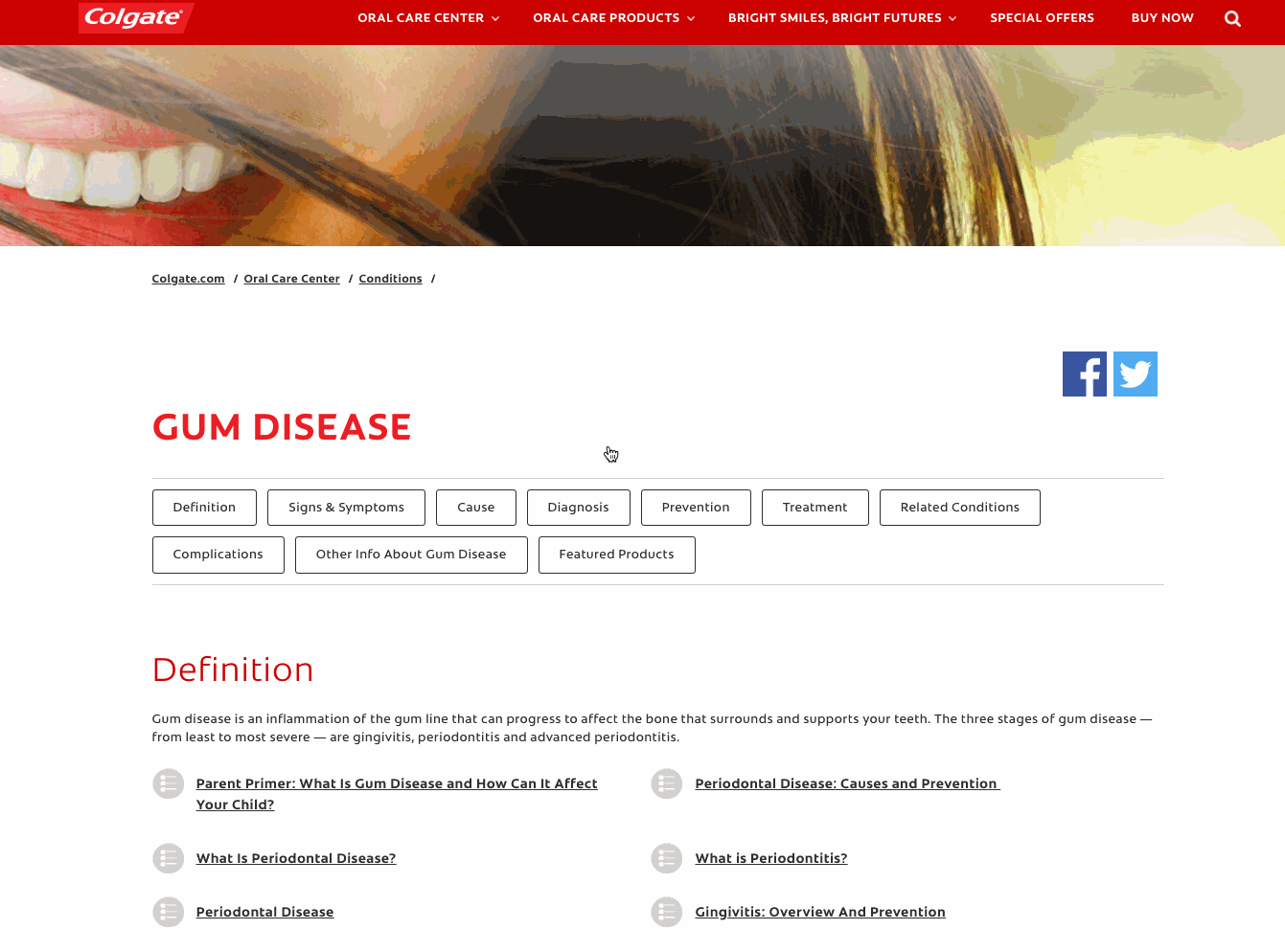
8. Moz's Topic Clusters
The topic cluster framework is a highly effective SEO strategy that demonstrates to Google that the content on your website is organized and relevant to searchers. To learn more about this framework, watch the video below.
Some brands have taken this approach to the next level by creating a multi-page masterclass or guide that links together like-themed pillar pages. A pillar page is a website page that covers a topic in-depth and links to a cluster of related content, also known as a cluster. One of my favorite examples of this is Moz's Beginner's Guide to Content Marketing.
Moz creatively puts a chapter list at the end of each page that links out to more specific content marketing-themed pages within the topic cluster.
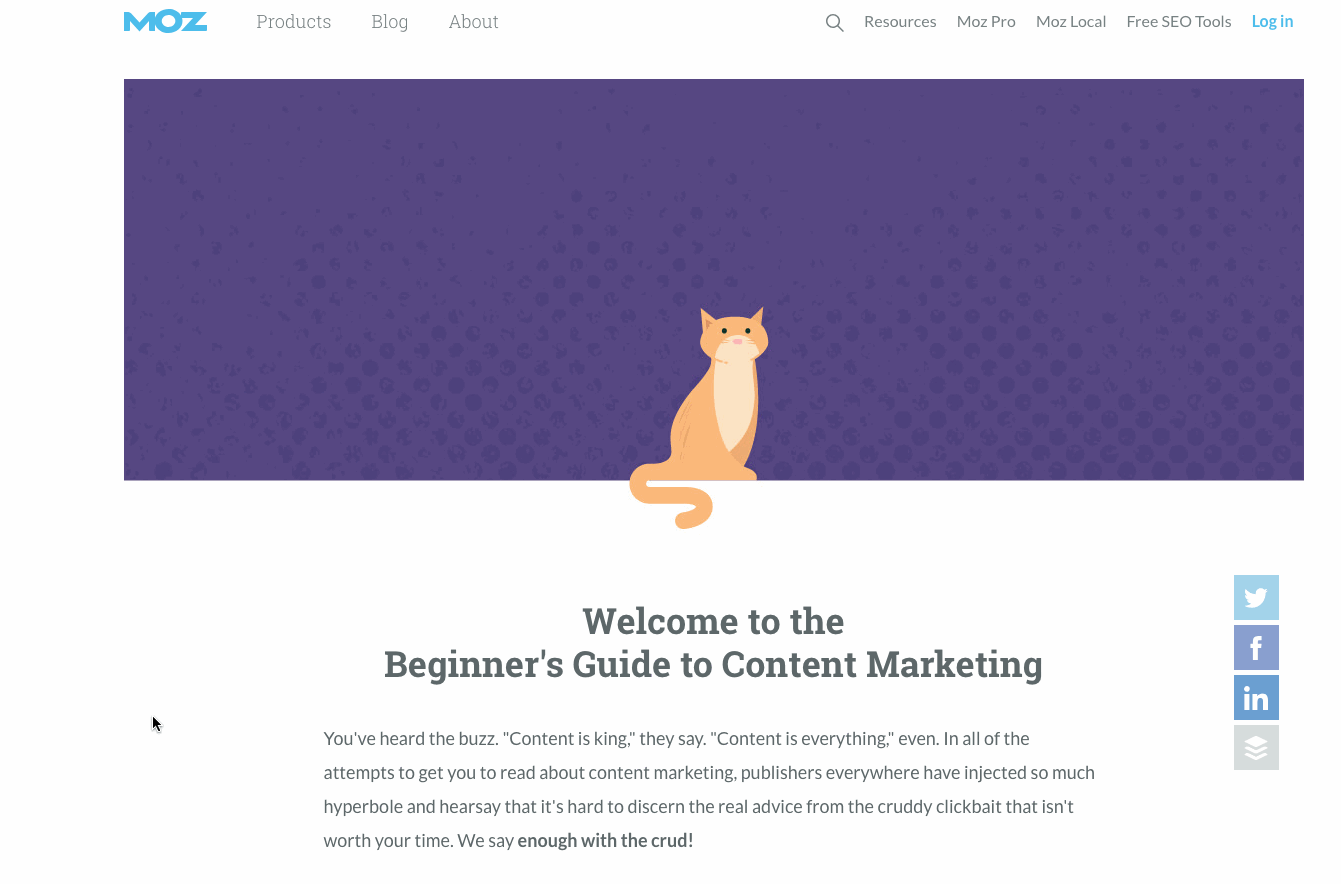
Additionally, using an anchor-linked chapter list is an effective way to connect the cluster together -- it provides value to the reader while passing authority through to each pillar page. This has worked well for Moz, since the majority of their pillar pages included in this guide rank as the first position on Google for their intended key terms:

9. Mailshakes' Marketing Automation
Marketing automation is a combination of software and strategy. With marketing automation, businesses can target prospects and customers with automated messages across multiple online and offline channels including email, text, web, and social media. Each message is sent automatically according to a pre-set list of instructions, called workflows.
Marketing automation can be an effective tool to keep your audience engaged with your brand, but it's important to make sure you're sending the right messages to the right people at the right time.
Mailshake, an email outreach tool, implemented marketing automation effectively by creating a Cold Email Masterclass to teach people how to make better connections via email outreach. The masterclass is made up of eight comprehensive lessons (i.e. pillar pages).
Mailshake knows that this is a lot of content for people to consume, and visitors won't likely read it all in one sitting.
To make it easier for people to learn step-by-step, Mailshake repackaged their masterclass into an eight-part email series. In other words, they automated their education to help their audience.
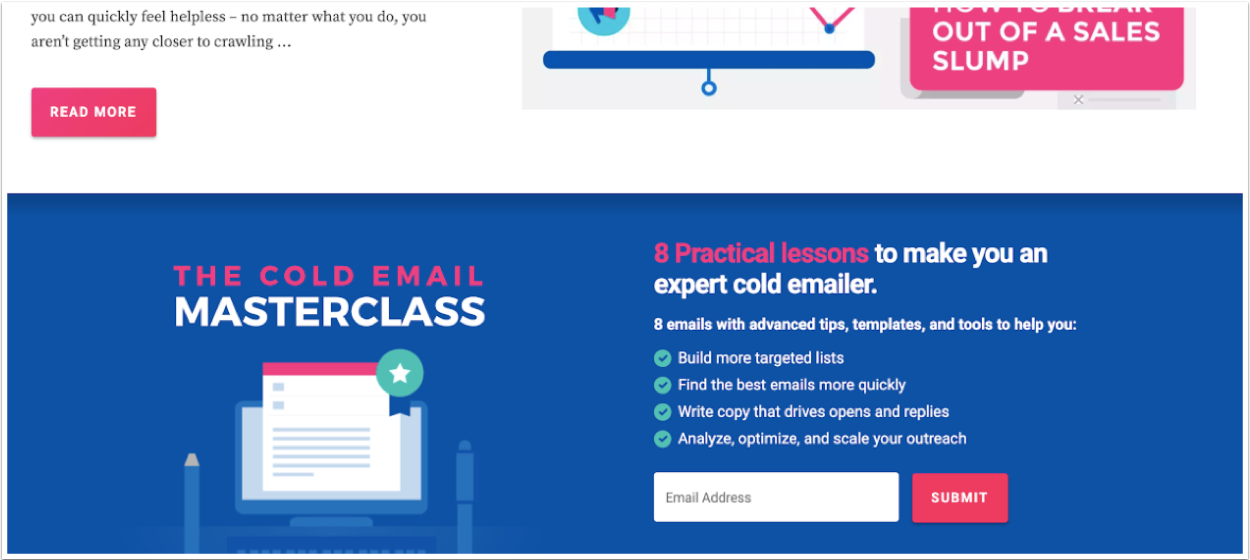
Mailshake acquired 5,321 email opt-ins for their cold email masterclass workflow in under one year -- proof that, if done well, this could be an incredibly effective strategy.
10. Townsend Security's Content Offer
One tried-and-true way to convert visitors into leads is by offering something of value in exchange for their contact information (i.e. email address). This "something" is referred to as a content offer.
Content offers include, but are not limited to:
- Guides
- Workbooks
- Templates
- Webinars
It can take a lot of time to create a valuable content offer from scratch.
One effective way to create a meaningful content offer is to repurpose and repackage pieces of content found on your website. For example, data security company Townsend Security created a pillar page for one of their topics of expertise -- encryption key management.
To help convert visitors into leads, Townsend repurposed and repackaged the content on their page into a guide. This allowed people to take the content with them, as opposed to having to search for the pillar page each time they wanted to read about encryption key management.
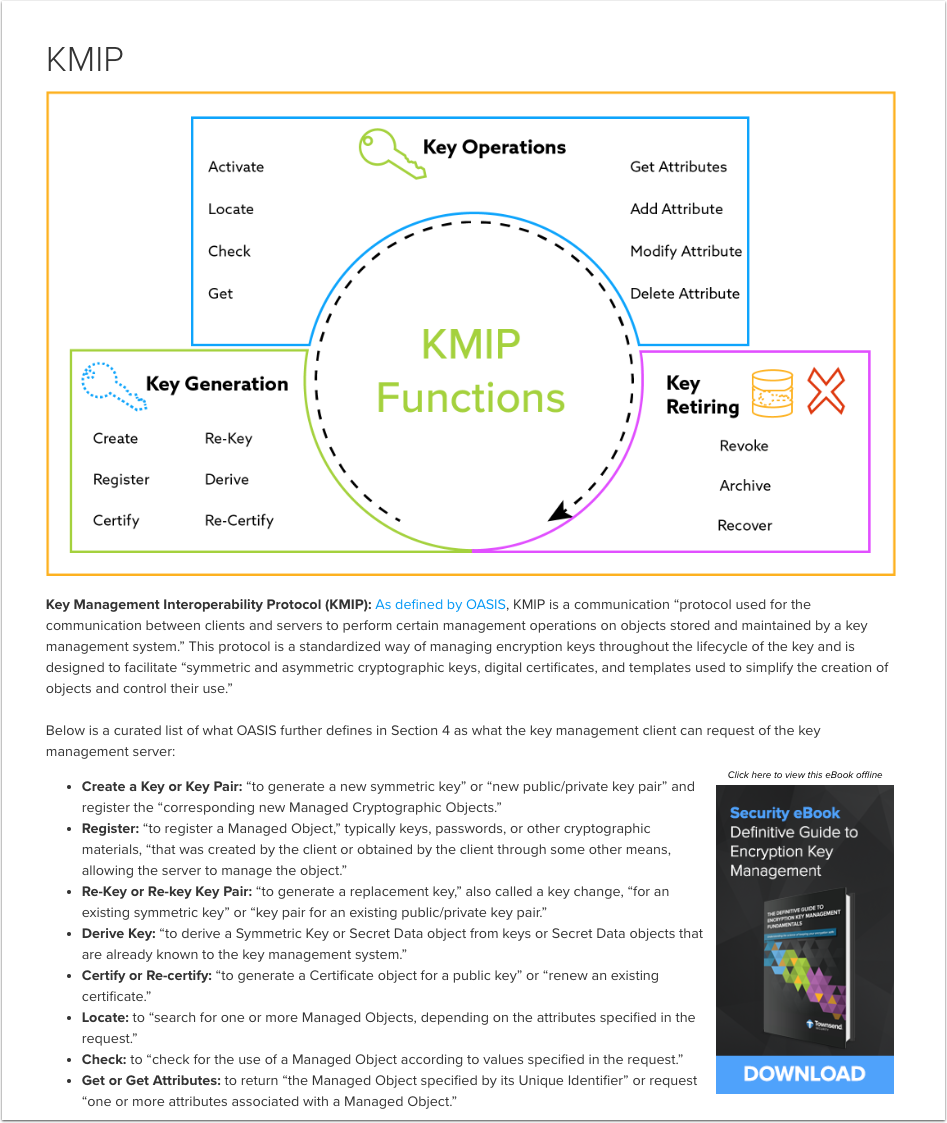
In the first year of publishing their encryption key management pillar page, 63% of visitors gave their information in exchange for a packaged PDF of the on-page content.
11. Venngage's Free Product
Your product should be your best marketing. An effective way to provide real value to your prospects is to create a free tool that aligns with your products and/or services.
If you can get a free user hooked on one of your free tools, then you're giving yourself (and your sales team) the best chance at demonstrating the value of your paid tools, too.
Let's say, for example, that you're a writer who needs help with creating visuals for the web content you create. You might consider using Venngage, a company that helps businesses create compelling visuals. In the free version of their platform, users get access to a wide variety of templates for infographics, presentations, brochures, checklists, and so on.
In the future, when your marketing team is considering paid products for design, you'll have Venngage top-of-mind.

And there you have it -- 11 content marketing examples to help get your creative juices flowing. Consider how you can apply one (or several) of these examples to your business to strengthen your content marketing efforts.
We live in a fast-paced digital world. In the time you read this blog post, a new channel, a new tactic, or a new competitor has emerged. The best chance you have at telling your business's story and growing a pool of engaged prospects and customers is by learning the art of content marketing -- and starting to apply it to your business, today.
No comments:
Post a Comment